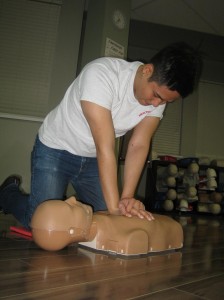Honolulu CPR is a provider of the best CPR training courses in Hawaii. Other providers can’t compare with the affordable rates and quality of training that we offer trainees. You can decide to enroll in basic or advanced programs, depending on the certification or training that you need. The credentials you get from us will be able to meet whatever work or academic requirement you need them for. Contact us for more course details and see how you can become a trained CPR rescuer today!
Do I really need CPR training?

Getting trained in CPR may not be on the top of your list of things to do but it is a very important skill that both the general public and healthcare providers should know how to give. According to the World Health Organization, the number one cause of death in the world is heart disease, followed by stroke. These two are caused by most commonly caused by pre-existing cardiovascular diseases. CPR is a skill that can help save someones life if done correctly.
Research has shown that if CPR is given within the first five minutes of a person collapsing due to a heart attack, it can improve the survival rate of the victim by as much as 20 percent. When we teach the basics to our trainees we make sure emphasize the following:
- When giving chest compressions, be sure to compress the chest by a third of the antero-posterior diameter. In adults and older children, this is usually 2 inches or around 5 centimeters. For infants, compression should be 1 and 1/2 inches.
- Rescue breaths are only given after the first round of 30 chest compressions. This is because poor oxygen delivery to the tissues is not due to a decreased level of oxygen in the blood, it is due to the poor circulation of blood.
- Defibrillation is not done when the victim has no heart rhythm (flatline or asystole). It is only given when the victim is experiencing arrhythmias.
- When giving defibrillation to an adult, two pads are used. For infants and toddlers, only one pad is used and placed in the center of the chest.
Our CPR training programs
We categorize our training programs into two: Basic Life Support and Advanced Life Support. BLS programs teach students about basic CPR skills while ALS programs teach students about advanced medical management of cardiac arrest. We have three BLS and two ALS programs. Out of the five programs, only three re-certification classes are available.
All of the course below are offered a various schedules, even during the evenings.
- Basic CPR and AED training – 4 hrs
- Basic CPR and AED training for HCPs – 4.5 hrs
- Basic Life Support for HCPs – 4.5 hrs
- Basic Life Support for HCPS re-certification – 4 hrs.
- Advanced Cardiac Life Support – 16 hrs.
- Advanced Cardiac Life Support re-certification – 5 – 6 hrs.
- Pediatric Advanced Life Support – 14 hrs.
- Pediatric Advanced Life Support re-certification – 6 hrs. and 20 mins. / 8 hrs. and 20 mins.